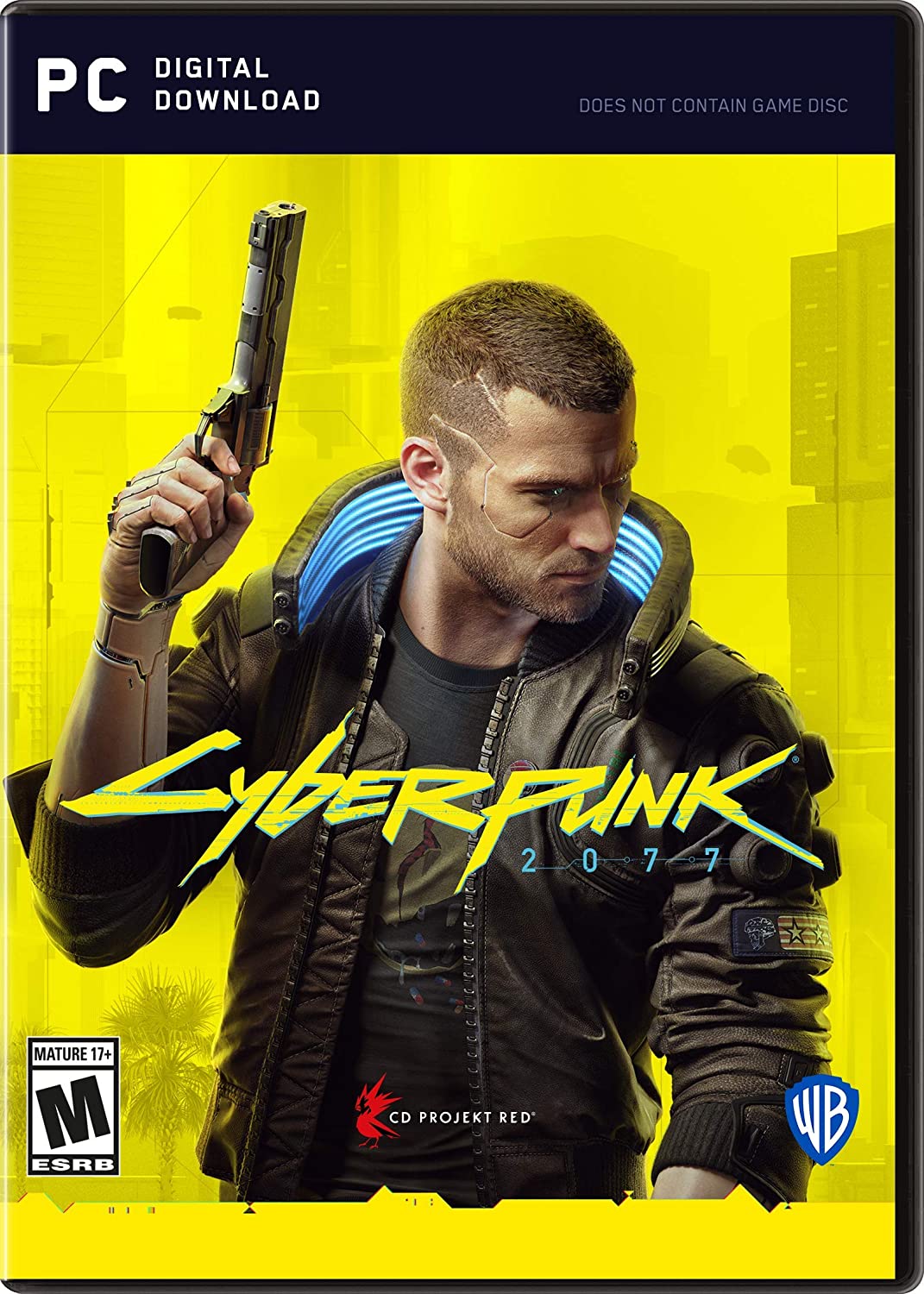Cyberpunk 2077
by Jared Richards, Learning and Information Services Supervisor
 After multiple delays, one of the most anticipated video games of the year, “Cyberpunk 2077”, has finally been released. It is a large, open-world game, set in a dystopian future, where you play as a mercenary outlaw trying to track down a cyber implant that could grant immortality.
After multiple delays, one of the most anticipated video games of the year, “Cyberpunk 2077”, has finally been released. It is a large, open-world game, set in a dystopian future, where you play as a mercenary outlaw trying to track down a cyber implant that could grant immortality.
As you may have guessed from the title, the game has a very specific aesthetic. Cyberpunk is a subgenre of science fiction that portrays a gritty future filled with technologically enhanced body modifications, mixes punk and hacker cultures together, and has a strong 1980s vibe. This last part makes sense because cyberpunk really started making a name for itself in the 1980s with writers like William Gibson, Bruce Sterling, and Katsuhiro Otomo, a Japanese manga artist best known for “Akira,” which is credited with starting the cyberpunk movement in Japan.
When it comes to science fiction, I tend to be more drawn to time travel and time loop stories. But as I patiently waited for “Cyberpunk 2077” to be released, I became more interested in the authors and books that have helped create and popularize the cyberpunk subgenre.
A good place to start is “Mirrorshades: The Cyberpunk Anthology” edited by Bruce Sterling. This is a collection of short stories that will give you a taste of cyberpunk, without having to commit to a novel or whole series of novels. Science fiction, and cyberpunk in particular, can be densely packed when it comes to world-building and story, so it doesn’t hurt to dip your toes in with a short story to see if the water is right for you.
“Neuromancer” by William Gibson, first published in 1984, is viewed as one of the most influential cyberpunk novels, and went a long way in popularizing the subgenre. The protagonist, Henry Case, is a hacker and data-thief that is caught stealing from his employer. As punishment, his nervous system is damaged so he can no longer enter the matrix. This is a term you may be familiar with because the movie “The Matrix” starring Keanu Reeves was highly influenced by this novel.
Case is approached by a new, mysterious employer named Armitage, who offers to fix Case’s nervous system in exchange for joining a team comprised of a street samurai, a psychopath, and the digital consciousness of Case’s dead mentor. The team is tasked with joining two artificial intelligences (AIs) in order to form a super-AI, something that is currently prohibited by law. The job seems straightforward enough, but “Neuromancer” is a fairly dense novel, and things aren’t always what they seem.
William Gibson has left his mark on science fiction and cyberpunk, by coining terms like ‘cyberspace’ and the idea of the matrix to describe a virtual space. Neal Stephenson, author of “Snow Crash,” has left a similar mark. He helped popularize the word ‘avatar’ to describe someone’s digital representation, and coined the term ‘metaverse’ to describe the shared virtual space created by virtual and augmented reality, and the internet.
In the world of “Snow Crash,” corporations have gained more power than national governments and everything from jails to mega-churches have become privatized and franchised. Even individual communities, called ‘burbclaves,’ have been walled-off and operate as city-states with their own constitutions and laws.
Hiro Protagonist, our protagonist, or maybe our hero, delivers pizzas in the real world, a business now run by the mafia, but in the metaverse he is a well-known hacker and programmer. The plot of the novel is centered around a neuro-linguist virus, both in the real world and the digital metaverse, that has its origins in ancient Sumerian culture and the Tower of Babel myth. This retelling of that myth says that in order to beat the same virus in ancient times, which used the Sumerian language in concert with a physical virus to program people’s brains, an anti-virus was created. This anti-virus prevented humans from understanding the Sumerian language, thus preventing the brain reprogramming, and led to the creation of the languages we have today. Like many protagonists, Hiro is tasked with saving the day, and I am partial to this story because he is aided along the way by a virtual librarian.
I now find myself with the dilemma of wanting to play “Cyberpunk 2077,” but also wanting to read the stack of books I have checked out from the library. No pressure, but if you start putting some of these books on hold, I will be forced to read them just a little bit faster. Everyone wins.

